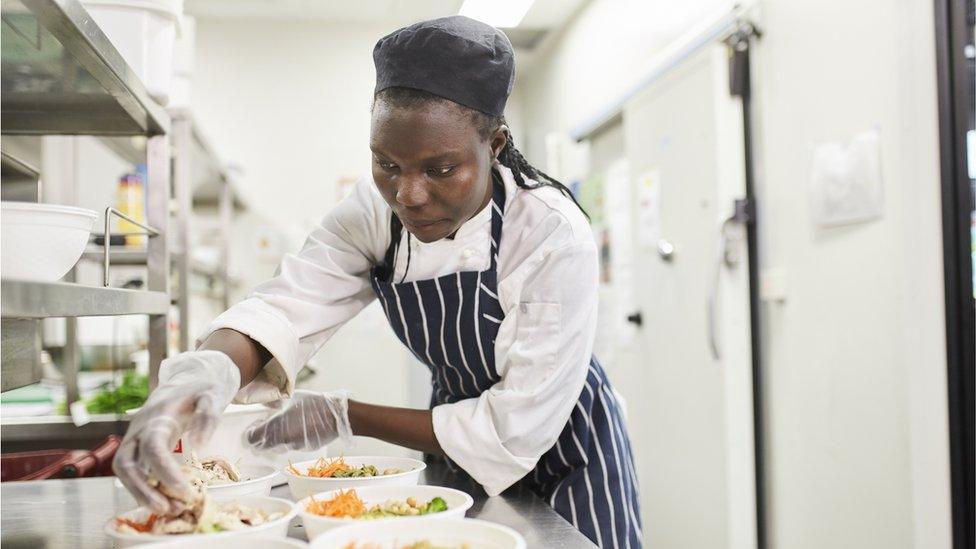Unemployment in Scotland falls to record low
- Published

Scotland's unemployment rate has fallen to a record low, official figures show.
The Office for National Statistics (ONS) found that the unemployment rate for those aged 16 and over was 3.1% between May and July.
This was down on the period between April and June this year when the rate was 3.2%, and is the lowest level since records began in 1992.
The UK unemployment rate was 3.6% over the same period - its lowest level since 1974.
However, the squeeze on pay remains, with rises in regular pay failing to keep up with the rising cost of living.
When taking the rise in prices into account, the value of regular pay fell by 2.8%, the ONS said.
Inflation - a measure of price rises - remains at a 40 year high of 10.1%. The latest inflation figure, due out on Wednesday, is forecast to be higher.
Meanwhile, the employment rate for those aged 16 to 64 in Scotland was 75.2% between May and July, which was 0.3% down on the previous quarter.
This was below the UK-wide employment rate of 75.4% for that age group.
Job vacancy signs have become an unexpected feature of recovery from the pandemic, and do little to reflect the economic stresses to be found elsewhere in the economy.
While those vacancies give opportunity to individuals in search of work, or of better work, the flipside is that recruiters see this as a crisis. Many companies are operating well under capacity while they struggle to fill those gaps with the skilled workers they need.
While Brexit is part of the explanation, the Institute of Employment Studies notes the increase in the number of people of working age who are unavailable for work, including a big increase in those with ill-health. Some of this is due to long Covid, mental ill-health coming out of lockdowns and NHS waiting lists.
It is the pay figures that tell us more about the state of the economy. Average pay in early summer was up 5.5%, including bonuses, and 5.2% without them. But price inflation was up by more, so real spending power was down by 2.8%.
That's the average. Before accounting for inflation, private sector pay was up 6%, retail and hospitality was up 7%, but public sector pay was up only 2%.
That helps explain why public sector workers, with much higher levels of trade union membership, have been taking industrial action to close that gap.
All this reflects the position in early to mid-summer, but more recent sources of data are already shifting. Vacancy rates have peaked and inflation has continued to rise.
Forecasters suggest that the expected recession will take a toll on jobs. That typically lags a downturn in economic activity, but continues after the recession is technically over.
Related topics
- Published16 August 2022